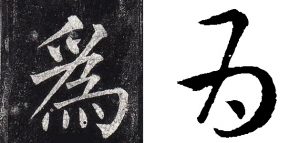Simplified Chinese, Traditional Chinese, Classical Chinese, Mandarin, Cantonese…maybe you’ve already heard of these variants a few times, but still don’t know the difference between them and which do you need for your translation or interpretation project. Don’t worry, we will explain it to you in a concise and clear way.
First, which service do you need? Translation or interpretation?
Translation: Simplified Chinese, Traditional Chinese or Classical Chinese
Interpretation: Mandarin, Cantonese, etc.
The differences between these Chinese variants lie in several aspects, among which the most important is the form of expression. In short, the Simplified, Traditional and Classical Chinese are written language, while Mandarin, Cantonese or other dialects like Hakka spoken language (accent). The Cantonese can also be in written form, however, it differs a lot from the standard written language.
The word “simplified” or “traditional” refers to the writing system. Like other languages in the world, Chinese is constantly evolving. The last important language reform took place in the 1950s. After taking the power, the present Chinese government began to simplify the Chinese characters in order to eliminate the illiteracy, but Hong Kong and Taiwan didn’t participate in this movement and continue to use the traditional writing system until today. And the Classical Chinese is the written language used from the 5th century BC to the early 20th century, which had a profound influence on the whole East Asian cultural sphere.
When it comes to Mandarin, Cantonese or other dialects, the difference mainly lies in the pronunciation and vocabulary. The Mandarin, an artificial accent created on the basis of Beijing dialect to facilitate the communication between the Chinese speakers from different regions, is considered as the standard accent in most Chinese-speaking regions, although the Cantonese upholds its position as the dominant dialect in Canton, Hong Kong and Macao.
Second, if you need the translation service, then which is your target market?
Mainland China, Singapore and Malaysia: Simplified Chinese
Taiwan, Hong Kong and Macao: Traditional Chinese
As explained earlier, Mainland China simplified the characters as part of the literacy campaign and later Singapore and Malaysia adopted this new writing system, while Taiwan, Hong Kong and Macao continue to use the traditional system.
Microsoft Word and many websites (like https://www.aies.cn/) have the function of swapping between the two variants, but it may contain a few errors and thus should be revised.
And if you need interpretation service, then where is your destination?
Mainland China and Taiwan: Mandarin
Hong Kong and Macao: Cantonese
Like Simplified Chinese, Mandarin was also designed to facilitate communication among Chinese speakers, because there are thousands of Chinese dialects and people are not always able to understand each other without the help of Mandarin, while Cantonese is the dominant accent in Canton, Hong Kong and Macao, with which you can communicate more easily there.
Third, which do you need, modern Chinese or archaic Chinese?
Modern Chinese: Simplified Chinese, Traditional Chinese
Archaic Chinese: Classical Chinese
Normally, the translation projects are carried out in modern Chinese (simplified or traditional), unless you need to translate a classic literary work. In this case, you have to specify that you are looking for a Classical Chinese translator, because not every native speaker is capable of reading classics.
We offer Simplified and Classical Chinese translation services, you may check the prices here






